Ордена России - [4]
However, the idea about the award presented for combat feats persisted and 45 years later Catherine II decreed the statute of the highest military order of the Russian Empire. The Order of St. George was instituted on November 26, 1769 in St. Petersburg. During a festive ceremony Catherine If awarded herself wizh the first class of this order, the most honoured in pre-Revolutionary Russia. The four-class Order of St. George with the motto "For Service and Courage" was intended exceptionally for decorating officers in wartime for valour and courage displayed in battle. The Order was named in honour of St. George the
Victor, who from time immemorial was looked up to as the protector of Russian troops. In early Rus the picture of St. George on horseback with a spear was attached to the helmets, shields, banners and seals. The Order included a gold cross covered with white enamel with a picture of St. George in the centre, a gold star bearing the Order's motto and a black and orange ribbon. The statute forbode to decorate the insignias with precious stones. The Order was awarded starting with the fourth class upwards. Over the 150 years from the day of its, institution and until 1917 only 25 people were awarded with the Order of St. George first class. Heroes of the Patriotic War of 1812 Generals M. I. Kutuzov and Barclay de Tolly and somewhat later general Field Marshals I. F. Paskevich and I. I. Dibich were awarded Orders of all the four classes. Instituted in 1807 was a combat award for soldiers and non-commissioned officers-a sign of favour of the Military Order-a silver cross with the picture of St. George.
In 1856 it became a four-class award: the first and second classes were gold and the third and fourth-silver. In accordance with the new 1913 statute the sign of favour began to be called the St George Cross. During World War / officers, too, were awarded the St George Cross for persona/ courage in battle.
Instituted in 1782, the four-class order of St. Vladimir was awarded for service to the Homeland, for combat feats and for long service record. The Order's insignias included a gold cross with red enamel and a black border, a star with the Order's motto "Usefulness, Honour and Glory" and a red ribbon with a broad black edge. Among the bearers of the Order of St. Vladimir, second in importance after the Order of St. Andrew the First-Called, were G. Derzhavin, a poet and a stateman, N. Karamzin, a writer and a historian, who was awarded for his work "History of the Russian State", and many other scientists and explorers.
The Order of St. Anne, instituted in Holstein in 1735, joined the statute of Russian decorations in 1797 on the coronation day of Paul I and had three classes with an unlimited number of order-bearers. The Order's motto was "To a Lover of Truth, Honour and Loyalty". Early in the 19th century the Order was granted its fourth class, which replacing the former third class, became a military award for junior officers and was attached to the hilt of the presentation sword inscribed with the words "For Bravery".
The Decree on Orders of 1797 ranked the sign of favour of the Order of St. Anne, instituted on November 12, 1796, for soldiers and non-commissioned officers for long service record and special merits, among the insignias of the Order of St. Anne.
In 1831 two Polish orders, the Order of the White Eagle and the Order of St. Stanislaus, joined the statute of Russian decorations. The system of the Russian highest state regalia had practically been formed a/though projects of instituting new orders cropped up once in a while. Beginning with 1845, the pictures of the saints were replaced on all the orders awarded to non-Christians with the depiction of the Russian state coat-of-arms. As of 1855, crossed gold swords were mounted on all the orders, except the Order of St. George, intended for decorating heroes for combat feats. In Russia two foreign orders were awarded to Russian citizens for a brief period of time. At the close of the 18th century Emperor Paul I, elected the Grand Magister of the ancient Order of St. John of Jerusalem (Maltese Order), giving it his preference, awarded this Order to his subjects. Nicholas I awarded the Polish Order Virtuti Military to those who took part in crushing the 1830 Polish revolt.
Every Order had its statute and seal. Visitors will find on display genuine statutes of nearly all Russian orders together with their insignias in the halls of the State Armoury Chamber. The collection of Russian regalia popularizes the history of the appearance and development of the system of Russian decorations and gives an insight into the specific branch of jewelry art. The very first orders were made by the Armoury's masters and in the 18th-beginning of the 19th centuries-this work was entrusted to the best jewellers of St. Petersburg. The 19th century saw the appearance of craftshops and major firms making order insignias of all kinds which employed gold- and silver-smiths, painters and enamellers. High quality processing of the precious metal, radiance and pureness of the enamel of a wide range of tints, the play of light in diamonds lent each and every order an artistic value and inimitable beauty.
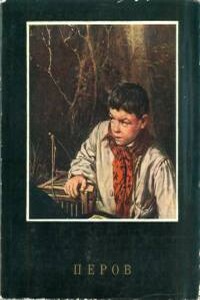
Василий Григорьевич Перов был выдающимся мастером критического реализма в русской живописи 60-х годов XIX столетия. Он первый показал бедственную жизнь и бесправное, нечеловеческое положение, в котором находился русский крестьянин.
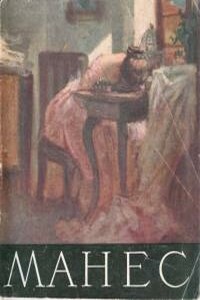
Иозеф Манес стоит в ряду славной плеяды лучших представителей чешского искусства и литературы XIX века. Его имя называют рядом с именами Бедржиха Сметаны, Божены Немцовой, Яна Неруды.Рисовальщик, иллюстратор, живописец и художник-монументалист Йозеф Манес является по существу родоначальником реалистического чешского искусства XIX века.
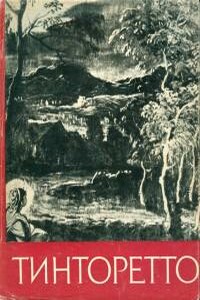
Альбом посвящен творчеству Якопо Тинторетто, великого итальянского художника XVI века, автора знаменитых полотен, украшающих и поныне интерьеры Дворца дожей и многих церквей Венеции, полотен, являющихся гордостью лучших музеев мира. Вступительная статья посвящена творческой биографии мастера, анализу его важнейших произведений. Приведены основные сведения о его жизни, охарактеризовано то новое, что внес художник в искусство своего времени. Помещенные в альбоме репродукции воспроизводят основные работы Тинторетто. Альбом рассчитан на широкие круги читателей, интересующихся изобразительным искусством.
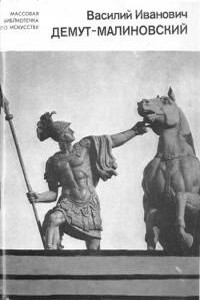
Демут-Малиновский принадлежит к блестящей плеяде скульпторов русского классицизма, деятельность которых определила небывалый расцвет искусства ваяния в первой трети XIX века. Большое творческое наследие Демута-Малиновского содержит произведения станковой и мемориальной пластики, портреты, анималистическую скульптуру и рельефные композиции. Широкий размах строительства в этот период способствовал развитию дарования скульптора-монументалиста, и именно к этому жанру относятся его наивысшие достижения. Искусство Демута-Малиновского типично для своего времени, оно соответствует основным требованиям господствовавшего стиля классицизма и в то же время несет на себе печать индивидуальности, что придает произведениям скульптора определенное своеобразие.

В книге рассказывается история главного героя, который сталкивается с различными проблемами и препятствиями на протяжении всего своего путешествия. По пути он встречает множество второстепенных персонажей, которые играют важные роли в истории. Благодаря опыту главного героя книга исследует такие темы, как любовь, потеря, надежда и стойкость. По мере того, как главный герой преодолевает свои трудности, он усваивает ценные уроки жизни и растет как личность.
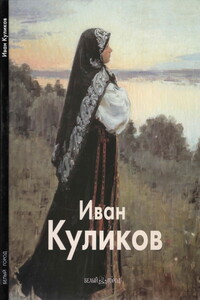
Среди множества учеников великого русского художника Ильи Ефимовича Репина одним из достойных его последователей был Иван Куликов. Творческий путь Куликова был типичным для художественной молодежи конца XIX - начала XX столетия. В его творчестве нашли свое отражение сложные социальные перемены в общественной жизни, в свободе эстетических взглядов, в переоценке пути исторического развития России.